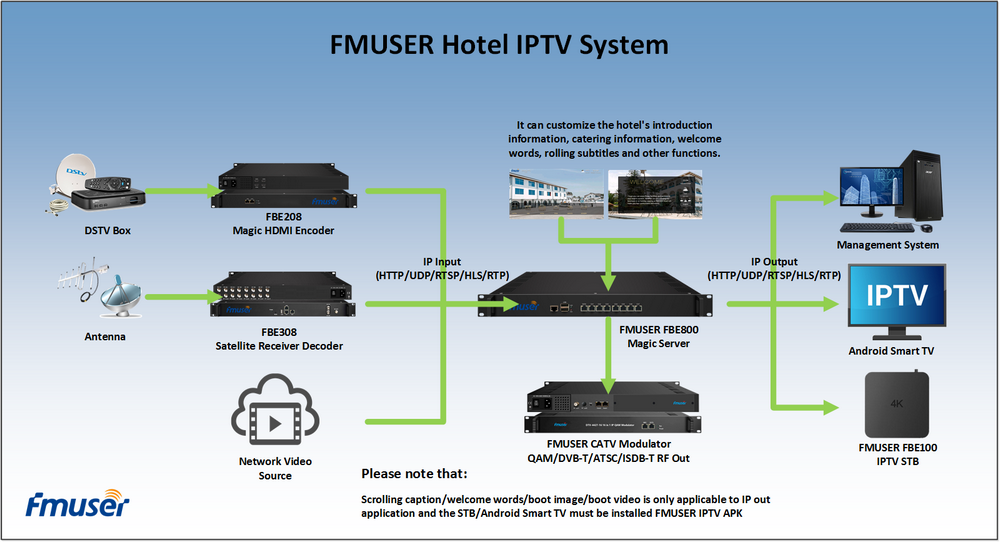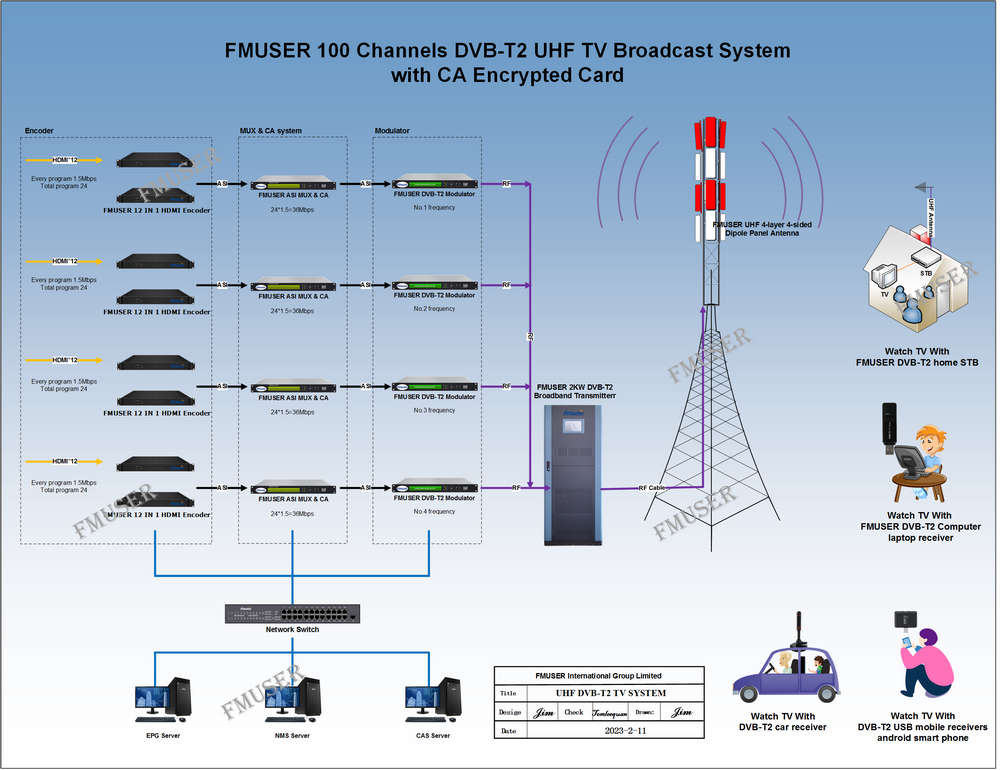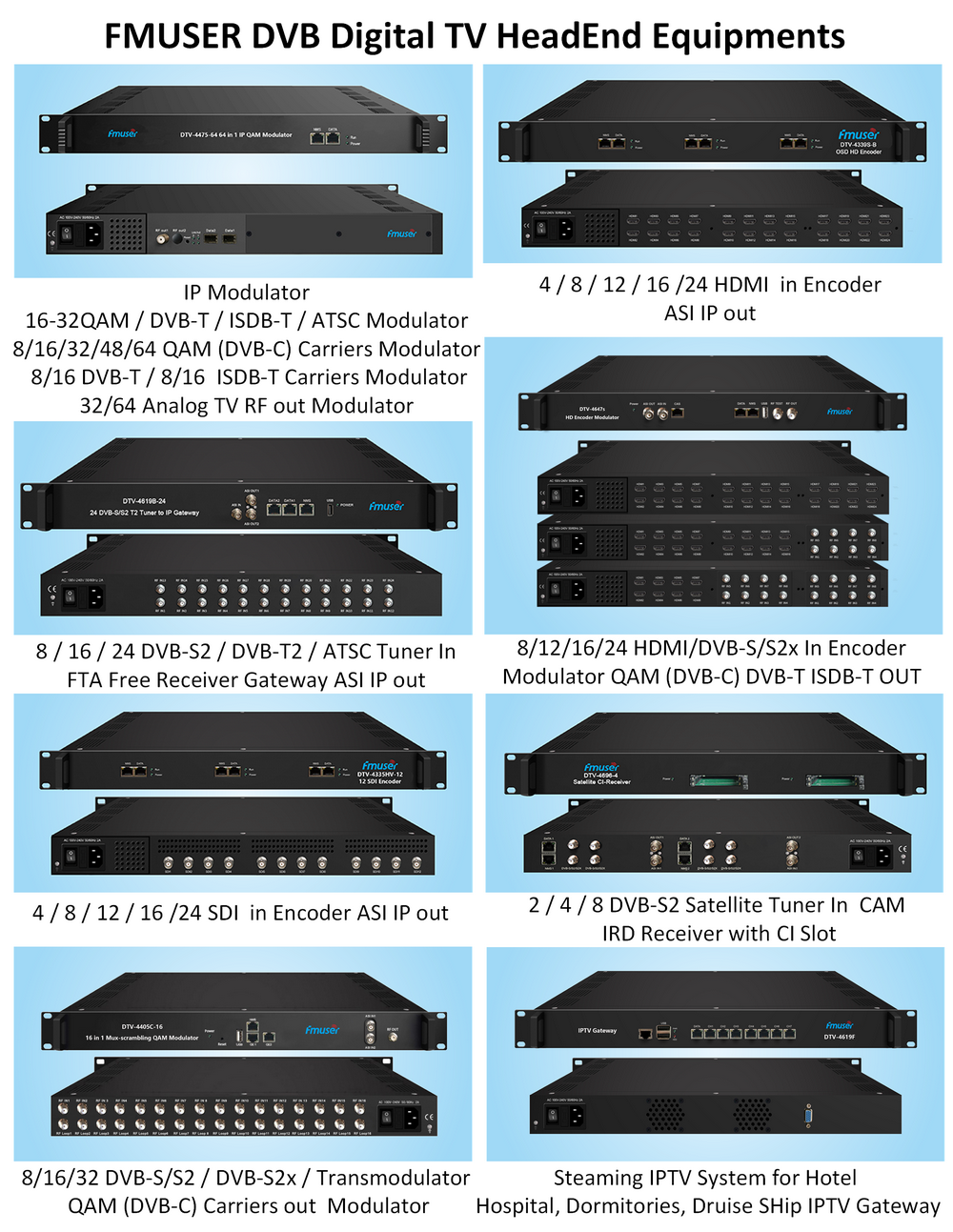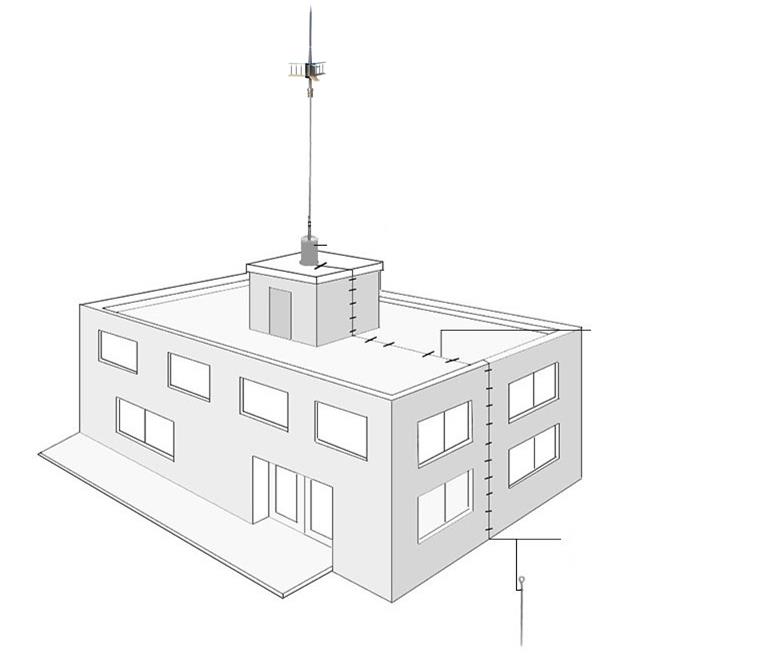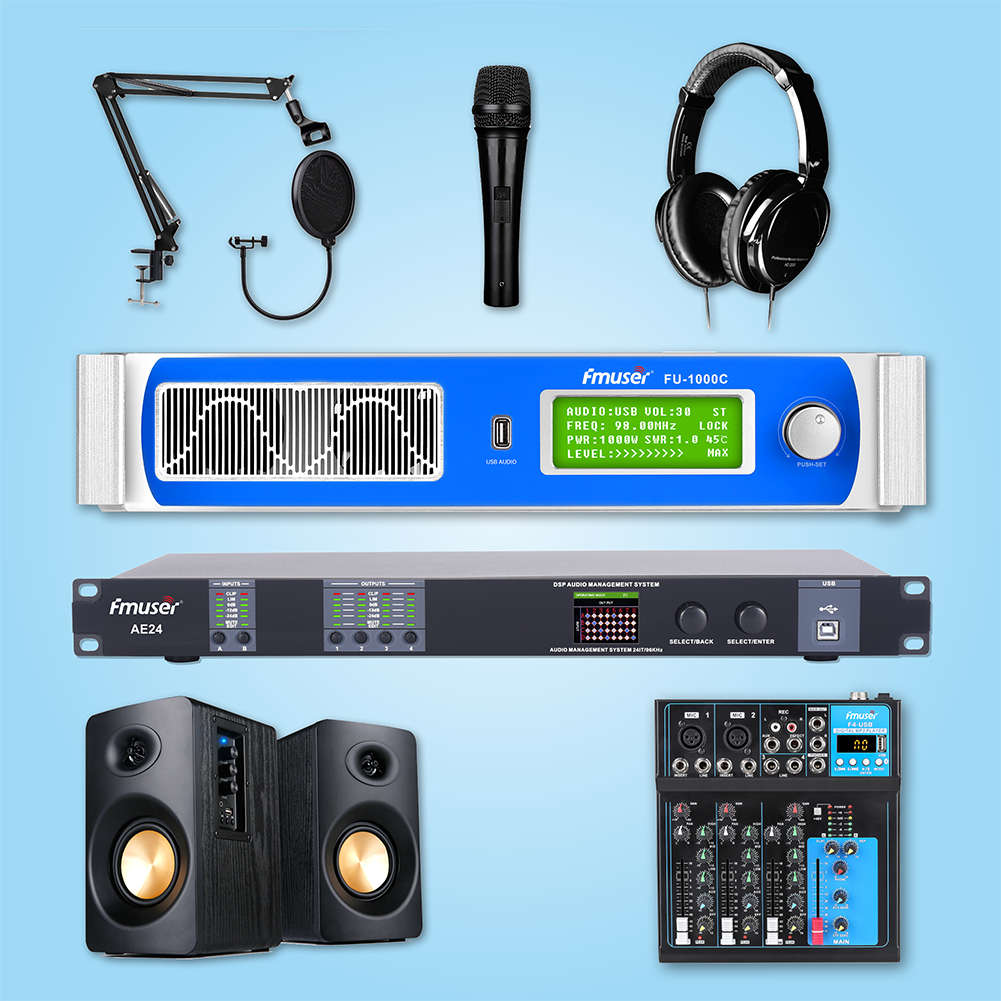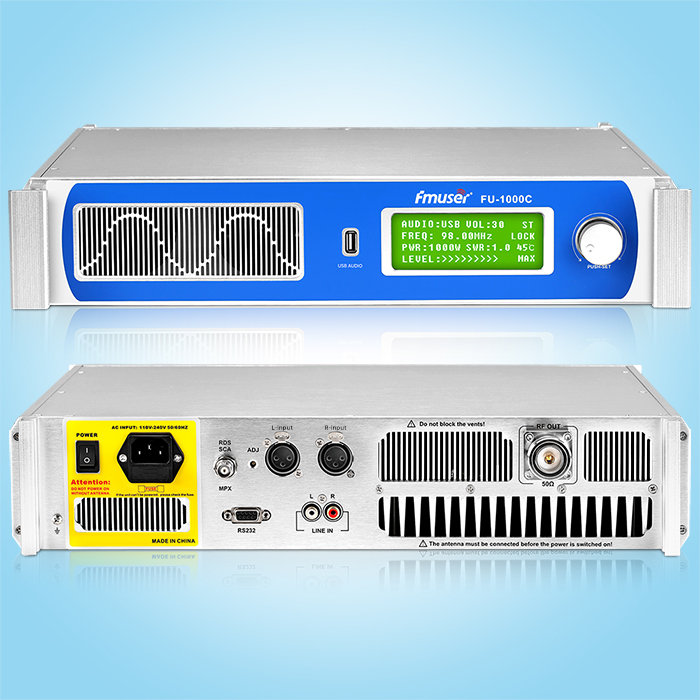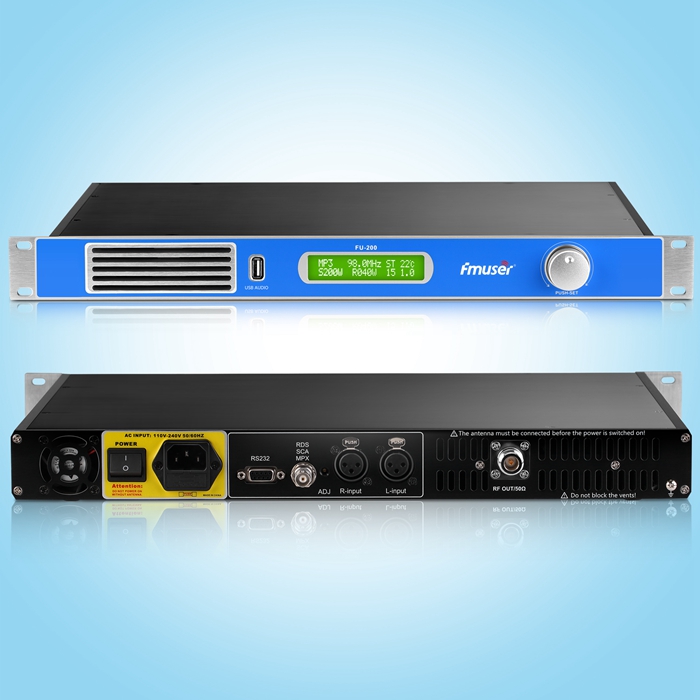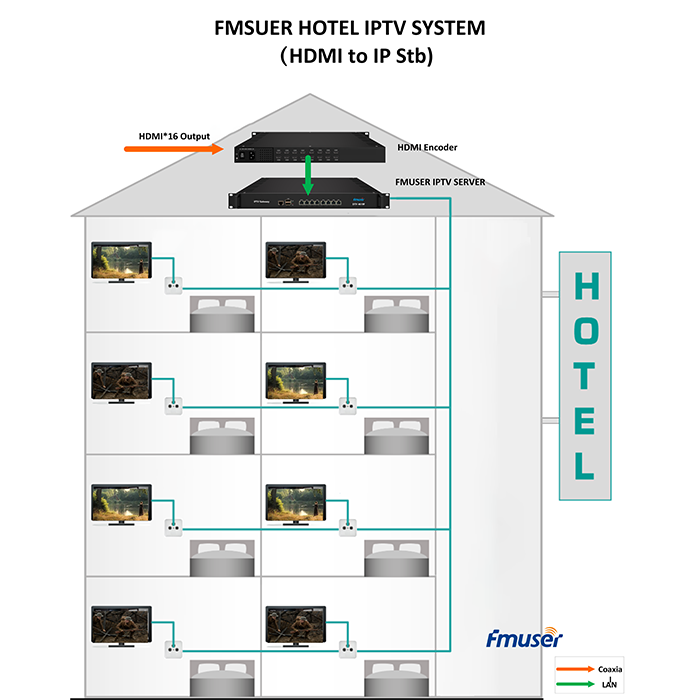Production of launch antenna, Transmission Antenna
Keywords: production of antenna
Launch antenna production
The radiation antenna of the radio is particularly important. A 5W transmitter plus a gain of 8dBi antenna, and a 20W transmitter adds a gain to 2DBI antenna to the receiving. The gain of the antenna is a symbol of its emission efficiency; half-wavelength coupling is often used as a reference to the antenna efficiency, and its gain is 2.15dbi.
The impedance match of antenna, feeder cable, and amplifier output stage is also important. If it does not match, the power transmitted to the antenna may be much smaller than the output power of the amplifier, and the power amplifier is burned in the worst case. The impedance of antenna and feeder cable is usually 50 or 75 ohms. Be
In addition, the antenna should be installed at a higher position, such as the roof, mountain. For FM frequencies, the transmit power is not the most important factor affecting the range of transmission. It is important to see the transmit antenna from the recipient to see the transmit antenna, while there is no big tree and a high building hindrance. However, the antenna can be covered by heating in the microwave and does not heat. If you put a little effort to find a good location, you can send the signal quite far with a small transmitter.
The following introduction to the most practical antennas. For small power (<30w) radio, double-angle TV pull the antenna, the two-line J pole antenna, the simple GP antenna is the most simple, practical; for medium high power, the J pole made of copper tube or aluminum tube, even The grade, the log cycle is the best choice.
The importance of antenna emission element length
You will find the following introduction to emphasize the length of the antenna to 1/2 or 1/4 wavelength, why? Because the length of the antenna is wrong, the impedance and the design value difference are poor, resulting in a decrease in emission efficiency. For example, the correctly produced half-wave coupling impedance is 75 ohm generic resistance, and if the length is halved, the impedance becomes 15-400 j ohms, which is 15 ohm resistors, 400 ohm capacitive impedance. The resistive part of the antenna impedance is part of the effective part, while the sensing portion only causes the reflected wave, and the energy feedback back the transmitter. This phenomenon generally describes the standing wave ratio (SWR), the stronger the station, the better, 1.0 represents the reflection wave is zero. Please refer to this example: "Production and Test of Double Line J Popular Antenna".
If no feeder cable, the antenna's sensing can be poured with an additional adjustable inductor or a capacitor, and the matching of the antenna is tuned. For example, a shortening dipole antenna is shortened, and a 400 ohmic capacitive sensing pin of a 400 ohmic impedance is used to turn the antenna to 15 ohm pure resistance. However, this also requires the output amplifier of the transmitter less than 15 ohms, which has certain difficulties in the circuit design, and the frequency of the antenna has also become very narrow.
The wavelength of the radio wave in the air is L = 300 / fm, where F is an emission frequency (MHz), such as a wavelength corresponding to 100 MHz, 3 meters.
Dipole antenna
The most commonly used antenna is the center-driven half-wave dipole antenna, as shown in the right A. The production method is to welder a crude copper wire (or copper tube, aluminum tube, or shielding of coaxial cable) to the BNC socket. The thickness of the thick copper wire is approximately 1/4 wavelength, ie 75 / fm, where F is a transmit frequency (MHz). If you are not sure you use the frequency, use 70cm. Such components require two sets, and the B figure shows how the two sets are connected together. The crude copper wire on the above part should only be connected to the center of the BNC socket, and the crude copper wire below the part should be connected to the BNC housing.
The original impedance of the dipole antenna is 75 ohms. Since two semi-semi-semi-semi-semi-symmetrical (ie, balance), there is a "1: 1 balance-unbalance transformer (Balun) when the coaxial cable (unbalanced) is connected. The simplest production method of this converter is to route the cable about 10-20 cm in diameter.
The antenna should be placed vertically, at least 50 cm air should be left between the cable and the antenna.
Use TV pull the antenna as an FM dipole antenna
The general bifiduous TV stalking antenna can be used as a FM half-wave dipole antenna. This antenna generally comes with Balun (such as a small box of the left), but you have to test the power you want to emage (the coil and the magnetic core are not hot in advance). Another solution in Balun is to use the coaxial cable as a feeder, and give it a 4-5 circles of approximately 10 cm in diameter (see the above description).
The antenna should be placed vertically, each pulling stalks to 75 / f, the two stalks should be a straight line (the same as the figure in Figure A), and should not be V-shaped. Cables and the antenna stalk should not be parallel, but at least 50 cm should be left.
GP antenna
The GP antenna (1/4 wave emission element is connected to the antenna) and the half-wave dipolar antenna, since the upper 1/4 wave emission element is applied to the ground reflection forming a mirror, and the two constitute a dipole. The ideal ground reflecting surface is a very large (greater than wavelength) metal surface, but it is not easy to achieve.
A simple and effective GP antenna is shown in the right A, which includes five emitting elements (Radiator) the same length. In the center, the emitter is only connected to the center of the BNC socket; the other four connected to the BNC housing, and the role of the ground reflecting surface. The wire length of the emitting element is approximately 75 / fm, where F is a transmit frequency (MHz). The following four emission elements should not be straight out, but should be bent down 30-45 degrees, such an antenna has 50 ohm impedance, which can directly receive a 50 ohm cable (no balance - unbalance transformer) .
Figure B shows how to make GP antennas with BNC socket bases. Metal wire (crude copper wire, copper tube, aluminum tube, or shielding layer of coaxial cable) is welded to the central welctor of the BNC socket, while the following four emitting elements are welded to the bolt holes. You can make a ground to place this antenna, or you can hang antenna at a high degree like Figure C.
The J-pole (J-POLLE) antenna consists of a 1/2 wave emitter and a 1/4 wave driver matching, which is equivalent to a dipole antenna driven from the end, because its conductor is a J-shaped, said For J poles. Right Figure A is a J pole antenna instance, b is a J pole antenna (suitable for high power) with a copper or copper tube having a diameter of 3-10 mm (for high power), and c is a J pole created with 300 ohm television antenna. Sub antennas (suitable for 30W or less, referred to as double line J pole antenna).
The two-line J pole antenna is easy to make, easy to carry, easy to hide the characteristics (right) C). For detailed introductions and production steps on the double line J pole antenna, please refer to this article: "Production and Test of the Double Line J Pumper Antenna".
Super J-Pole Antenna has multiple 1/2 wavelength emissivity, higher gain, such as super j pole antenna (vertical placement) with 8DBI, the disadvantage is very long, vertical The emitting angle of the direction becomes smaller.
LPDA antenna (LOG cycle dip "
The LPDA antenna (LOG cycle dioem) is an antenna that is easy to make, frequency bandwidth, and high gain. However, the LPDA antenna is directional and is only transmitted to the front.
The right figure Fig.a is a schematic diagram of the LPDA antenna. Fig.b is an example of a three-dipode UHF television antenna for a double-sided printed circuit board, copper wire is an emitter UHF television antenna; Fig.c is a base frame with an aluminum tube, an aluminum strip is a seven-even pole of the emitter. FM broadcast antenna instance.
The base is actually two parallel conductors that are close to it. The particular length of the emitting element is fixed to the specific position of the base frame, forming a plurality of dipolams, two semi-half of each dipole are connected in different frame conductors (see FIGA) in the form of rotation changes. The number of dipper is related to the bandwidth and gain of the antenna. A 50 ohmic cable along the base (from the long emitting element to the short emitting element, such as the cable of the figc is done from the middle of the aluminum tube by A to B), then the core wire and shielding of the cable are respectively The such structure forms a necessary impedance converter in two frame conductors (short emitting element, such as FIG), shielded B, and at the shield B).
The design data of a pent dipper FM broadcast (88-108 MHz) antenna is as follows. The gain of this antenna is about 8dbi. The two central base frames of the antenna are composed of a copper pipe pitch of a diameter of 15 mm, or consist of 13.7 mm from a copper pipe spacing of 10 mm in diameter, so that the impedance of the antenna is 50 ohms.
Imphet serial number
Emitting element length (L) (unit: m)
Distance (D, M) of the emitted end of the radiogram
5
0.852
0.426
4
0.682
0.915
3
0.545
1.306
2
0.436
1.619
1
0.349
1.869
Our other product:


